 Albatrellus s.l. - click to expand
Albatrellus s.l. - click to expand
Species mentioned: Albatrellus ovinus, avellaneus,
subrubescens. Albatrellopsis confluens, flettii. Neoalbatrellus
subcaeruleoporus. Scutiger ellisii, pes-caprae. Xeroceps skamania.
Xanthoporus syringae. Polypus dispansus. Polyporoletus sylvestris,
sublividus, bulbosus.
Fevansia aurantiaca OR - a
pale pinkish orange false truffle with sticky locules inside. We have
a number of sequences from OR that show us what the DNA is, and reliable photos,
but I have not put together a sequenced and photographed match yet.
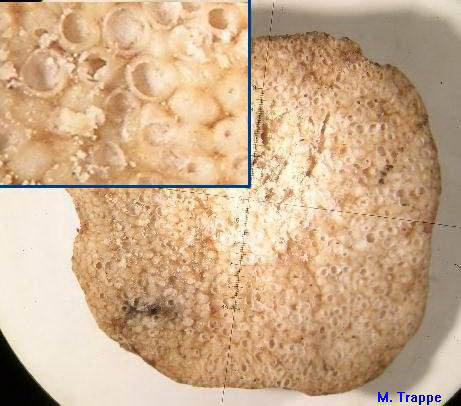
Fevansia aurantiaca © Matt Trappe
Albatrellus ovinus EU/avellaneus
CA/subrubescens FL
- These three
closely related species
can be pale yellow capped to dark brown, but stain noticeably
yellow where cut or in age. The caps may get slightly scaly, but not at all
like Scutiger. They are hard to tell apart and
common as a group although some
are undoubtedly rarer than others. They can be easily confused with other
species like Xeroceps skamania unless the yellow staining is noticed (it
has just started on some of the caps in the upper left of the first photo).
Albatrellus ovinus is a
European species with many samples of DNA from Europe and local specimens
matching. It is found here from Oregon through Alaska.
Albatrellus
avellaneus is described from California, and I have sequences from
Oregon and Washington.
Albatrellus subrubescens is described
from Florida. Two sequences from Oregon (and several sequences that appear to be
from Europe) are 4 bp and 2 indels different than two sequences
from Florida (but neither are the type sequence) so it's possible we have
that species or a sister
species here. This needs more study.
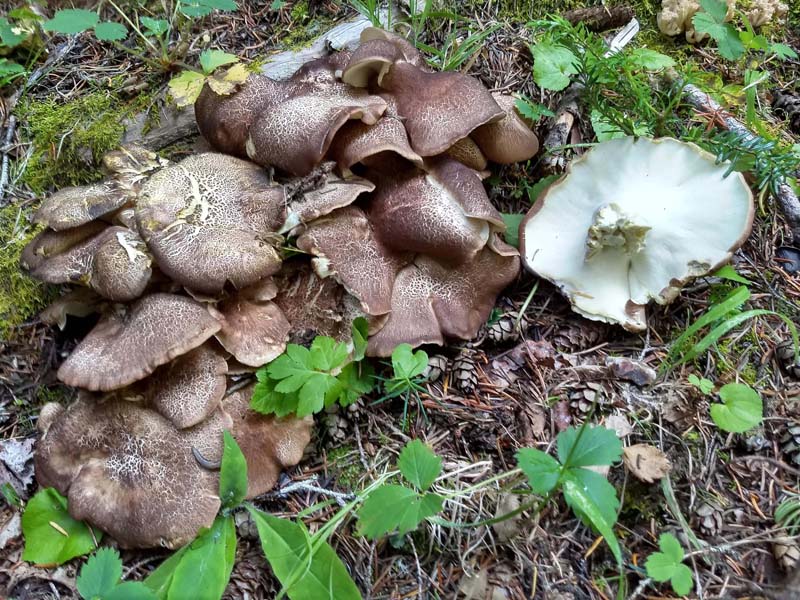
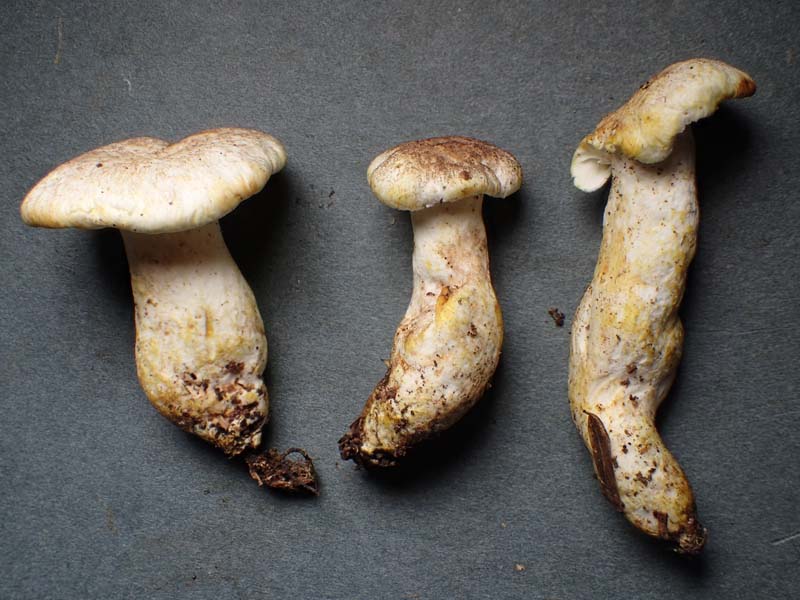
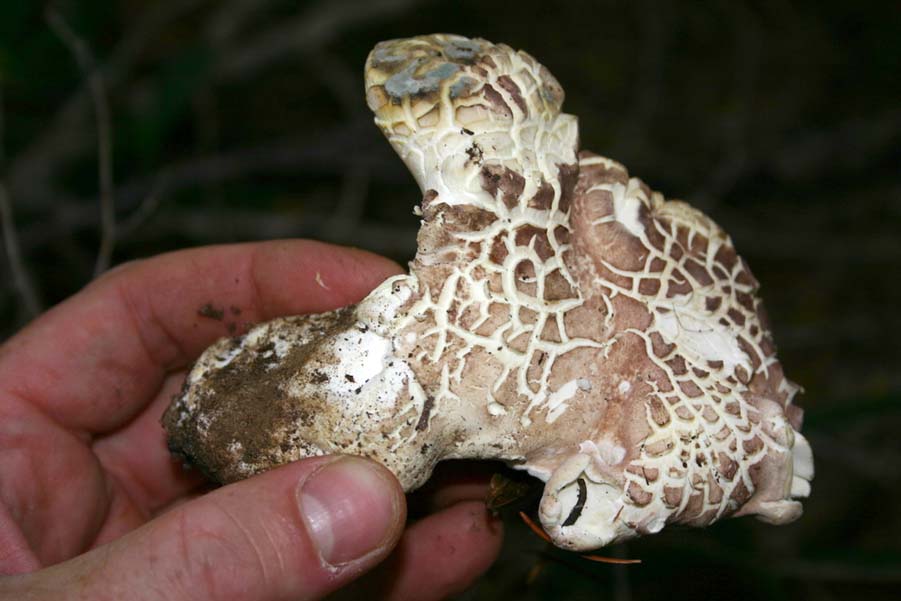
Albatrellus avellaneus © Michael Beug, and A & O Ceska,
Albatrellus ovinus © Jonathan Frank
Albatrellopsis confluens EUI/flettii WA
Albatrellopsis confluens is
a European orange-brown capped species.
Albatrellus flettii, described from Washington, is a
common beautiful blue
capped species (with white pores), at least when fresh, although the blue may
fade and then they look identical, including microscopically.
In
fact, they may be identical. European ITS DNA of A. confluens matches
local sequences of A. flettii exactly. For some reason, it is never
blue in the EU, but almost always starts out blue in the PNW (and the
few times it wasn't was perhaps because it was found old and already faded). If
it's decided that it's just one species, A. confluens is a much
older name. We need to study more genes than just ITS and look for other
differences. Is starting out blue enough of a difference to keep our own species
name?
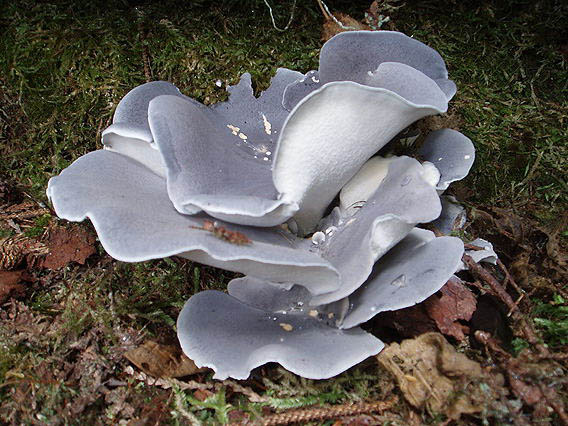
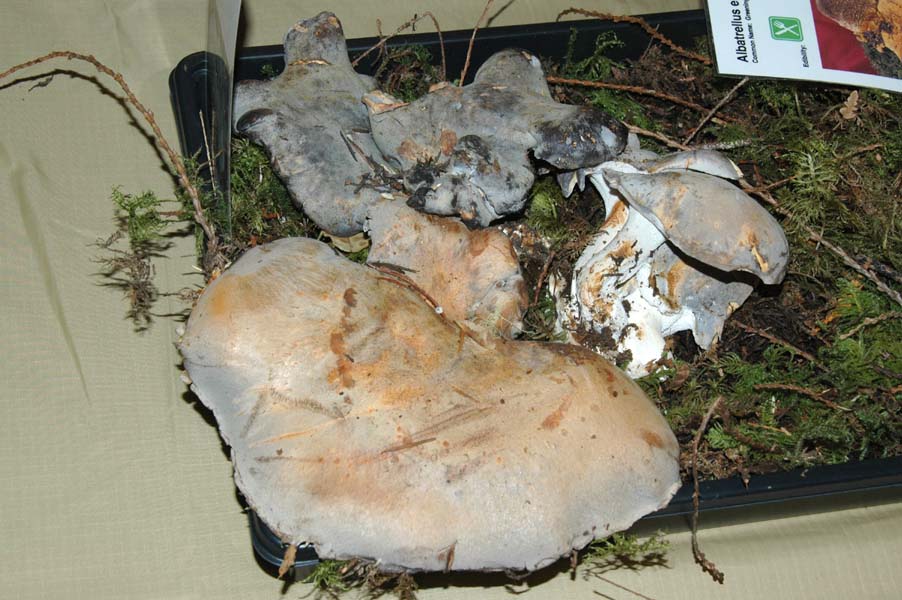
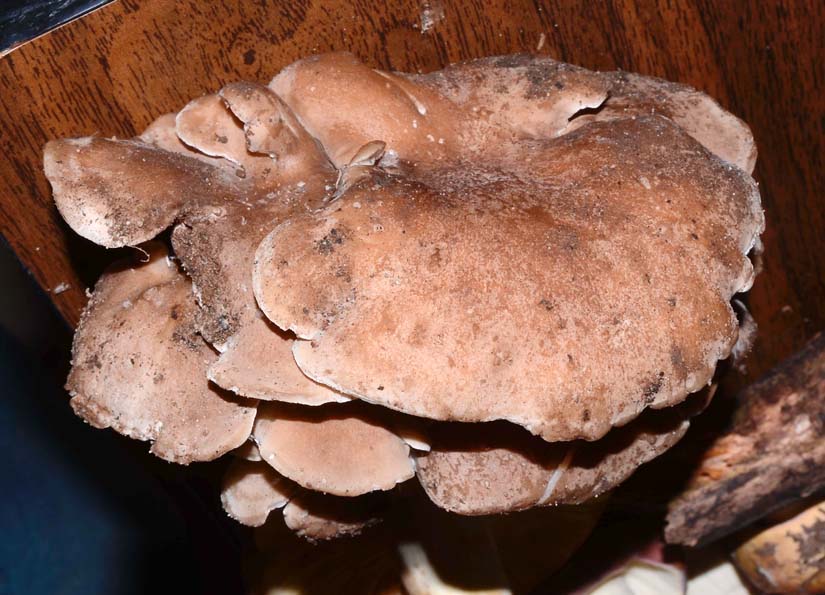
unsequenced Albatrellopsis flettii © Bryce Kendrick and Danny Miller (2 images), the
blue fading to orange-brown.
Neoalbatrellus subcaeruleoporus WA
- This
species described from
Washington is also easily
recognized by its bright blue pores as well as cap. It is much
smaller (<5 cm) than Albatrellopsis flettii (5-20 cm) and stays
consistently blue.
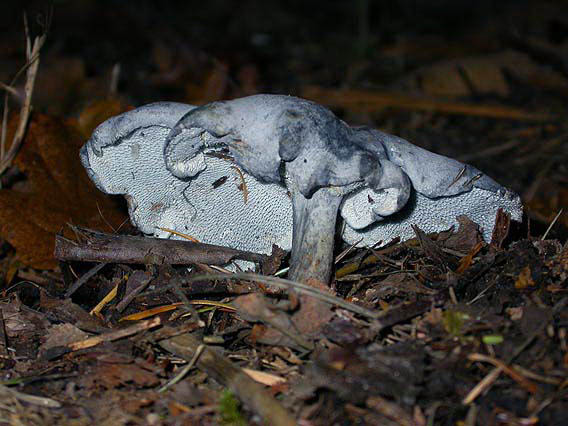
unsequenced Neoalbatrellopsis subcaeruleoporus © Ian Gibson
Scutiger cf ellisii NJ - this
species has a brown
scaly cap that is yellow in places, but most noticeably stains green
wherever handled. No other genus in the family will get this scaly. It was described from New Jersey. The two sequences we have,
from Idaho and Wyoming, do not match (2% different), so I would like to see sequences from the
east coast and more local sequences to ensure that we have the same species as
back east. As you can see from the photo, the greening of Scutiger ellisii can be very
subtle and easily missed.
Scutiger
'pes-caprae PNW01'
EU - a European species
rarely reported here that is
almost identical except for not staining green. Europe actually does have a genetically different non-staining species this
time, unlike for Albatrellopsis flettii. Most collections of this in the
PNW are S. ellisii where the green staining wasn't noticed or hadn't
happened yet, but S. pes-caprae does occur here. Only ITS2 has
been sequenced from S. pes-caprae in the EU so far, but we have a couple
of PNW sequences that differ significantly enough to show that ours needs a code
name, and provide ITS1 for our species.
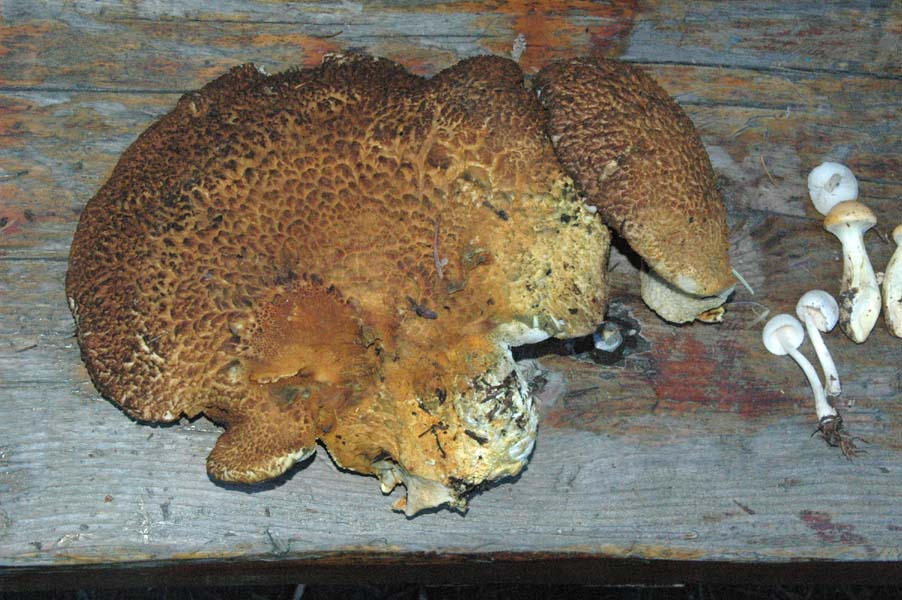
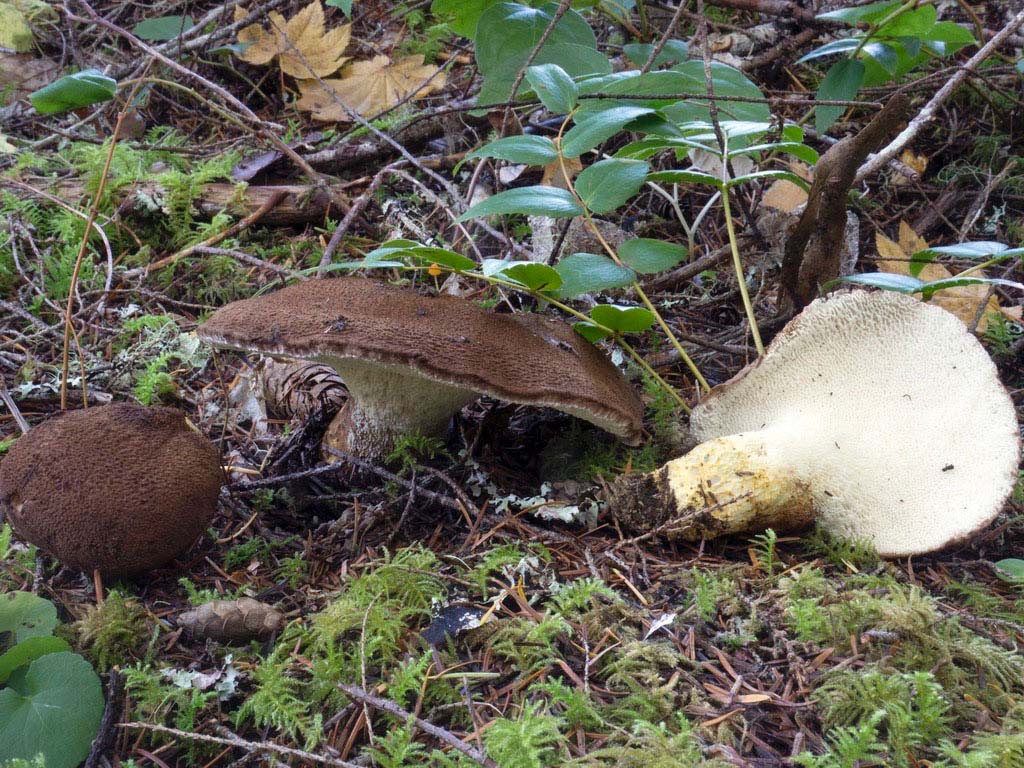
unsequenced Scutiger cf ellisii © Danny Miller, S. 'pes-caprae
PNW01' © Michael Beug
Xeroceps skamania WA - This
dark brown capped species is smooth to slightly felty, and may
crack in age, but is not scaly like Scutiger. The pores are yellowish
even when young, they don't stain yellow. It was described from Skamania
Washington, but the DNA has now been found in Oregon too, at least at
Breitenbush. This species is probably most easily mistaken for Xanthoporus
syringae, the yellow-brown capped and yellowish pored former
Albatrellus that is actually in the Polyporales order.
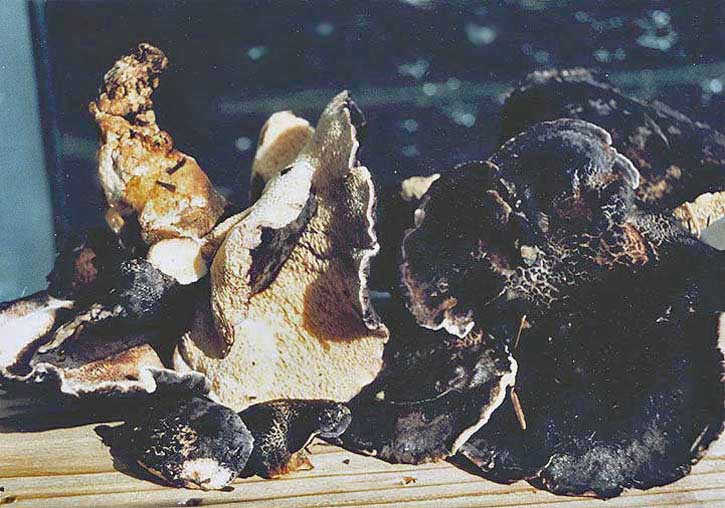
unsequenced Xeroceps skamania © Janet Lindgren
Polypus cf dispansus JP - This
species is easily recognized by its crazy cluster of rosettes of small
yellow-brown caps. It was described from Japan. A sequence from Costa Rica
and a sequence from Oregon are about 10% different from each other, so we
probably have several species in the genus Polypus worldwide, and no way
to know if ours is Polypus dispansus or needs a new name until we get DNA
from Japan.
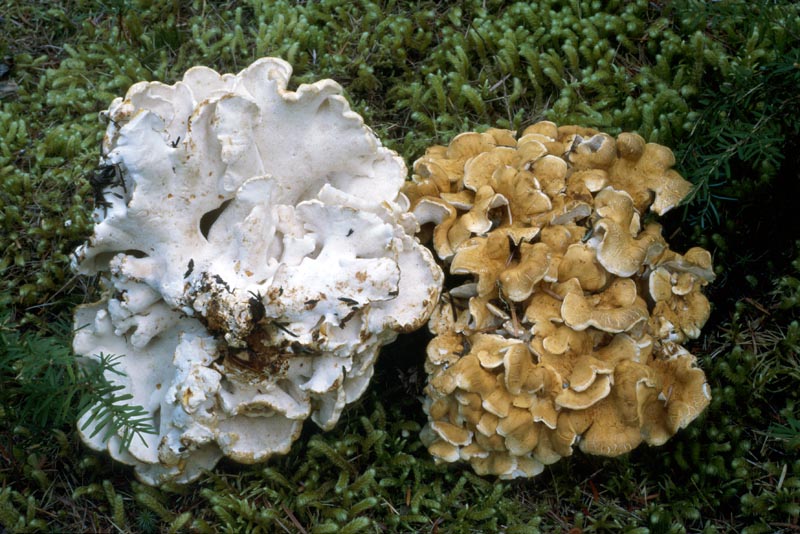
Polypus cf dispansus © Steve Trudell
Polyporoletus sylvestris BC (Polyporoletus
sublividus misapplied) - This
rare genus is best recognized by
interesting greyish lilac pores that look very pastel to me. The cap is
usually yellow-brown when I find it. It was described from BC and the one
sequence from BC is 4 bp and 4 indels different from the four Washington
sequences we have, which all match each other. So it would be nice to get more
BC sequences to make sure there is only one species here. The existence of a
separate name for west coast specimens from east coast specimens was overlooked
for years, possibly because the west coast name wasn't included in Gilbertson's
popular polypore book, so every local collection has been called
Polyporoletus sublividus, the east coast name, until 2010, when Audet
reminded everyone that not only was there a name for west coast specimens, but
west coast collections were morphologically and ecologically distinct from east
coast collections, so there really are two species and we need to use our name
for our collections. They are not P. sublividus. He was unable to get
east coast sequences to prove the genetic differences, so we need eastern
samples, but with the morpho and eco differences, I expect it will be proven.
'Polyporoletus' bulbosus
WA - a similar local species,
described from Washington. It has a bulbous stem and is more likely to grow
solitary than P. sylvestris. Its DNA is quite different and although it strongly resembles Polyporoletus, it
is near or inside Leucophleps. It is very rare, only known from the type collection from Mt. Rainier in 1948.
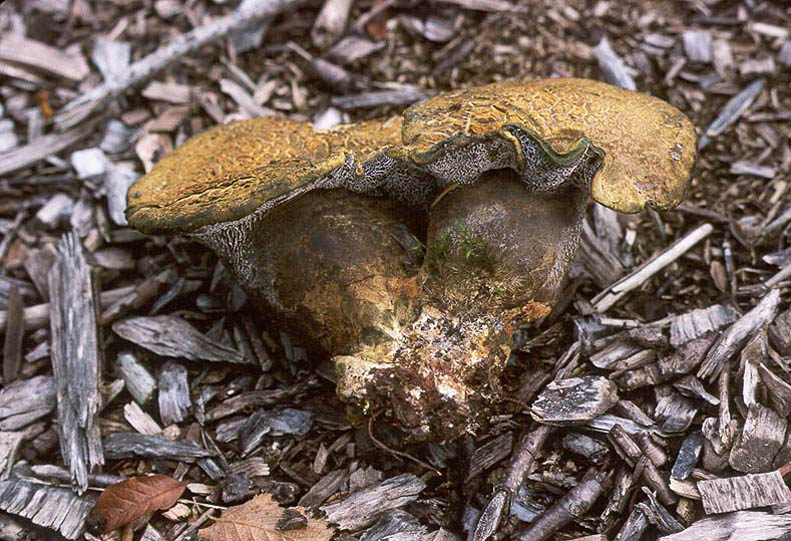
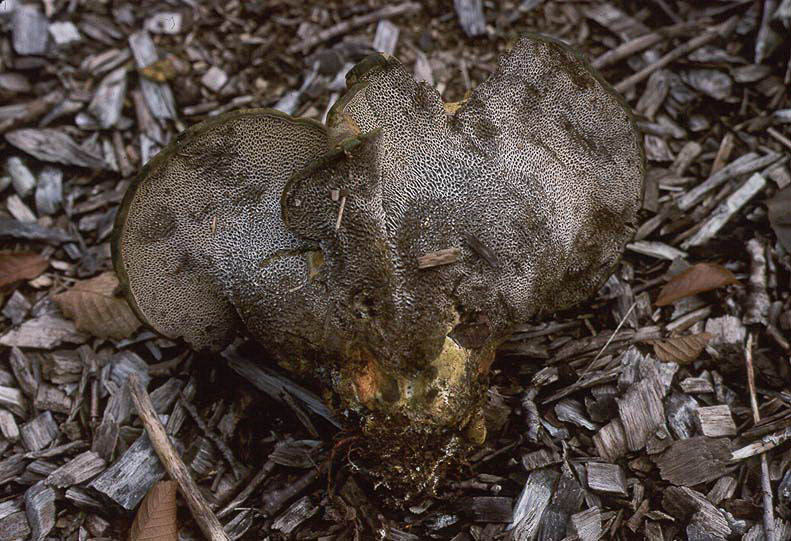
Polyporoletus sylvestris © Paul Kroeger (2 images)
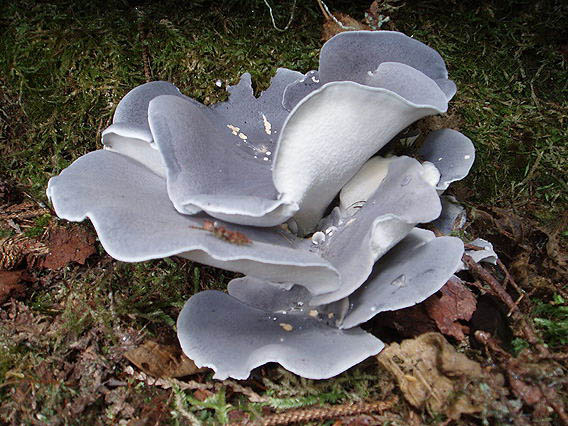
 Albatrellus s.l. - click to expand
Albatrellus s.l. - click to expand